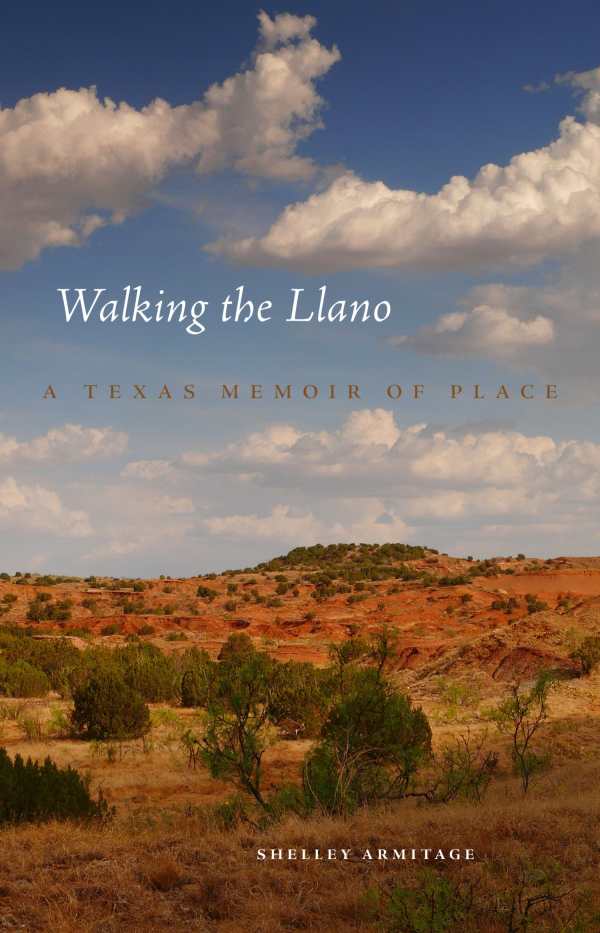Walking the Llano
A Texas Memoir of Place
- 2016 INDIES Finalist
- Finalist, Autobiography & Memoir (Adult Nonfiction)
- 2016 INDIES Finalist
- Finalist, Nature (Adult Nonfiction)
Advanced poetics are at play in this work that is both a tribute to the land and a moving exploration of family ties.
The Texas plateau known as the Staked Plain occupies thousands of square miles, and may have a memory just as vast, as Shelley Armitage displays in her awe-inducing memoir, Walking the Llano. Employing both an advanced poetics and an acute sense of her own family’s history, Armitage works to address the story of her family’s land within a vast human and geological landscape.
The book first dispels the notion that the Texas plains are an empty space, an in-between area without the potential to inspire, or to host life at all. Rather, Armitage shows that the plains are a place teeming with life, from the rich and diverse vegetation that springs from the soil, to oases in the grasslands that offer respite in dry times, to archaeological wonders and prehistoric discoveries. She picks up a dinosaur tooth on a walk in the wild; she enters into caves where native populations lived for hundreds of years, and marvels over artful petroglyphs left in their wake.
These pages draw forth the “poetry of the plains” otherwise missing in contemporary literature, an absence that becomes lamentable as Armitage’s own picture of the land deepens and expands. This loving note-taking even extends to the space below the “upside down mountain” of the plateau, where the greatest underground river in North America still flows, despite steady and relentless human depletion.
Yet as much as the book is a tribute to the land, it is also a moving exploration of family ties. The author pays homage to the ancestors who preceded her, eking out a hardscrabble existence in a not always easy terrain. She records how her parents worked an inexpensive plot of land for grand returns, if more of a spiritual variety, at times, than a monetary one. She nods to neighbors who arrived in a time when the land was still Native American territory, and to pioneers, and to great herds of creatures nearly lost to recent history.
Buffalo paths and wagon wheel tracks are observed from above; so too are changes to neighboring properties, where the hungry gas companies encroach and threaten delicate ecological balances. Armitage walks dry creek beds, bursts across rough terrain in an aging vehicle, and works to protect her family’s legacy, all with an acute sense of what it means to be the adopted daughter of an underlauded place. Decisions made for her family’s own plot, from replenishing the grasslands with government help to pursuing wind energy tracks, carry their own tough implications, and come in time with the difficult choices that Armitage must make for her ailing mother. Passages related to end of life decisions are particularly sympathetic.
Beautiful language and wide-ranging musings make Walking the Llano a treasure, even for those who have never much considered long stretches of the Texas wilderness before. Armitage draws forth from the rocky Texas soil a sense of both our impermanence within, and our lasting impact upon, local landscapes. Her text shows that, while our bodies are elementally connected to the earth, and while our tracks are not quickly erased, it is our responsibility to dictate the nature of the impressions we etch into scenes that both predate and will outlast us.
Reviewed by
Michelle Anne Schingler
Disclosure: This article is not an endorsement, but a review. The publisher of this book provided free copies of the book and paid a small fee to have their book reviewed by a professional reviewer. Foreword Reviews and Clarion Reviews make no guarantee that the publisher will receive a positive review. Foreword Magazine, Inc. is disclosing this in accordance with the Federal Trade Commission’s 16 CFR, Part 255.

